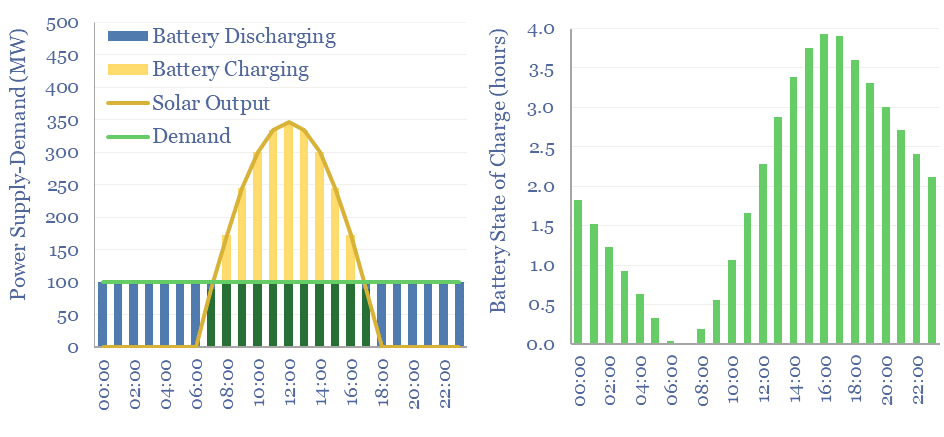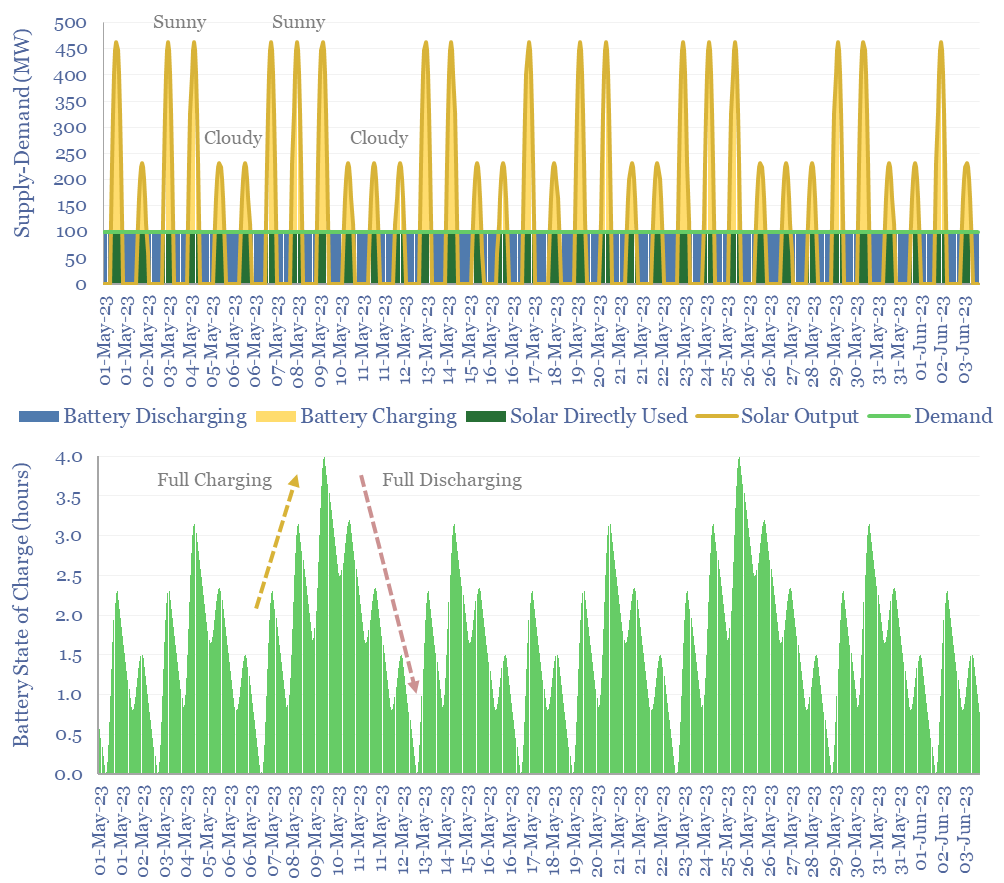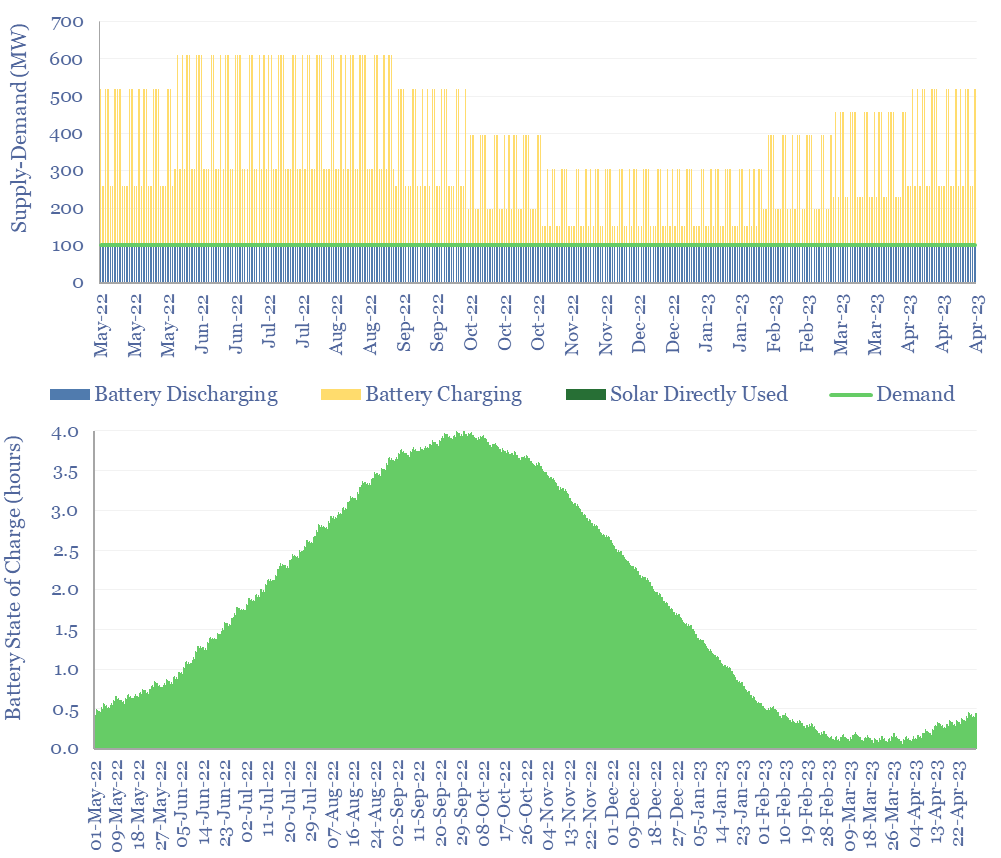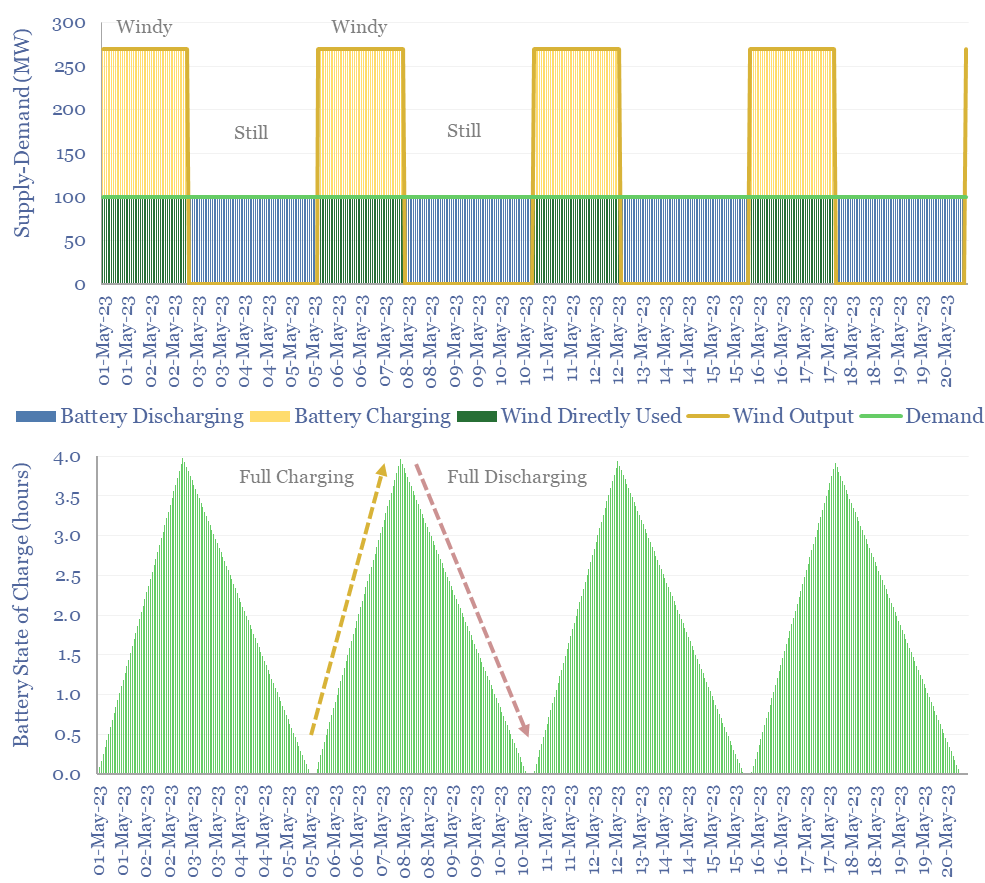How much wind, solar and/or batteries are required to supply a stable power output, 24-hours per day, 7-days per week, or at even longer durations? This data-file stress-tests grid-scale battery sizing, with each 1MW of average load requiring at least 3.5MW of solar and 3.5MW of lithium ion batteries, for a total system cost of at least 18c/kWh.
Start by modelling a power demand curve. Then model how much wind or solar would need to be installed to provide this electricity demand across a comparable timeframe. Then model how big a battery is required to move the renewables to align with the timing of the power demand curve. This data-file works through the maths, for different batteries, including their round trip efficiencies, and their costs.
The minimum possible requirement for a fully solar-powered electricity grid is that each 1MW of load requires 3.5MW of solar modules and 3.5MW of lithium ion batteries with daily charging-discharging, in a location where every day is perfectly sunny, with no clouds, and no seasonality, for a total levelized cost (LCOTE) of 18c/kWh.

Introduce volatility into the weather pattern, and the requirement for a fully solar-powered grid is that each 1MW of average load requires 5MW of solar modules and 9MW of lithium ion batteries with full charging-discharging every 1.5 days on average, and a total levelized cost (LCOTE) of 35 c/kWh. For more detail, please see our data-file into the volatility of solar generation.

Introduce seasonality in the weather pattern, with 50% lower solar output in winter versus the summer, and the requirement for a fully solar-powered grid is that each 1MW of average load requires 6MW of solar modules and a somewhat insane 235MW of lithium ion batteries with full charging-discharging every 70-days on average, for a total levelized cost (LCOTE) of 800c/kWh. Which is also somewhat insane.

Wind numbers are more demanding than solar numbers, all else equal, because the sun rises and sets daily (helping the utilization rate of the batteries), while wind can incur 2-3 windy days followed by 2-3 non-windy days (hurting the utilization rate of batteries). For more detail, please see our data into the volatility profile of wind generation.

Redox flow batteries are particularly helpful for integrating larger shares of renewables, and are modelled to result in total system costs that are c50% lower than using lithium ion batteries at grid scale. Please see our deep-dive research note into redox flow batteries.
This data-file provides underlying workings into renewable asset sizing, grid-scale battery sizing and total system costs for our recent research into renewables’ true levelized cost of electricity (LCOTE).